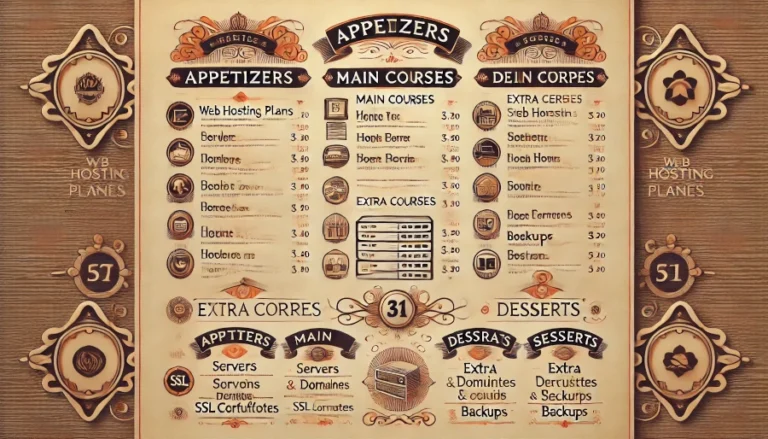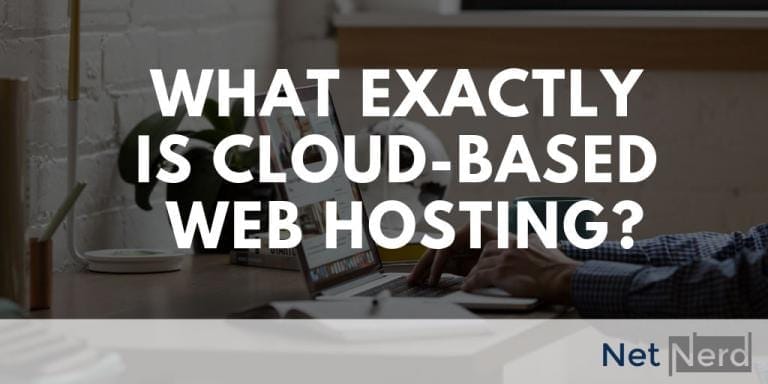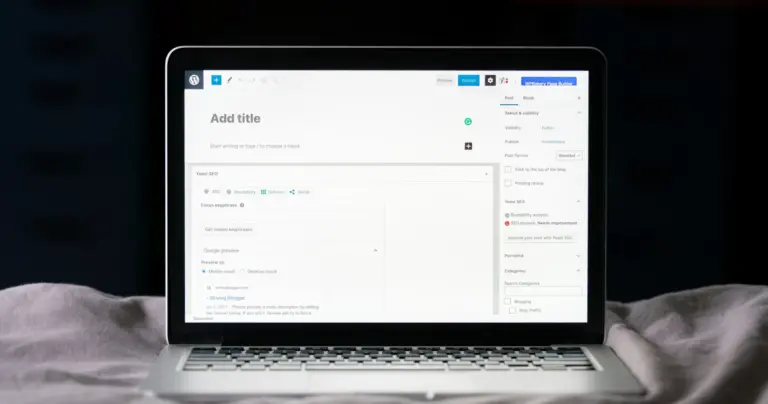Managed VPS or shared hosting? Why you’d need to consider this question, the difference between a managed VPS and a shared hosting account, the advantages and disadvantages of shared hosting, unmanaged VPS’ and managed VPS, and how to work out if you need a VPS or shared hosting.
When you’re about to launch a website, you might find yourself faced with a choice about how you host the website. You know that you need to host the website in some capacity, but how do you know which type of hosting is right for you and your new website?
You don’t want to cause yourself any problems by hosting that isn’t powerful enough to cover the overhead of your website. At the same time, you’d probably rather not have the additional cost associated with some extremely powerful hosting that would provide resources that aren’t going to be used in full.
You’re faced with a balance between cost and performance when launching a new website, and as it hasn’t been launched yet, how can you possibly know what you’ll need?
Shared hosting is a type of web hosting service where multiple websites (usually being operated by different people) all share the same physical underlying server and its resources, such as disk space, bandwidth, CPU and memory (RAM).
Due to the “multiple people sharing the same server” aspect, shared hosting is often the cheapest sort of hosting that you can use to operate a website.
Shared hosting accounts will often have limits such as:
- Disk space: The amount of disk space in MB or GB that can be used
- RAM: The maximum amount of memory that services being used in the shared hosting account can consume.
- CPU: The maximum amount of processor resources that services being used in the shared hosting account can consume.
- Entry processes: The number of concurrent scripts or requests a website can handle at the same time.
The reason that these limits are in place are to stop the services being operated by one customer consuming resources to the degree where it negatively affects services being operated by other customers held on the same server.
It’s often the case that a hosting company will provide a range of shared hosting packages that provide different amounts of resources, and cost different amounts. Generally speaking the more resources provided, the more expensive the shared hosting package.
The more expensive shared hosting packages are often still cheaper than a managed VPS service.
A managed VPS is a server that’s dedicated to the operation of services belonging to one customer. VPS stands for Virtual Private Server.
The virtual part means that the server doesn’t physically exist. It’s effectively a replication of a piece of hardware (called a server) in software. Whilst this might sound convoluted, virtual servers tend to be more resilient and less prone to failure, due to the virtual aspect.
The managed part means that someone else (who works for your hosting provider) maintains, configures and updates the VPS so that you don’t have to. This means that you can use a VPS service without suddenly having to become a systems administrator and know how to maintain a web hosting server. The managed aspect essentially makes the use of a server accessible to customers that don’t have the skill set required to maintain a web hosting server.
It is possible to obtain unmanaged VPS from some providers, and whilst these are cheaper that managed VPS’ it does mean that the owner of the server needs to know how to administer (update, patch, maintain and configure) the server itself.
A VPS, regardless of whether it’s managed or unmanaged provides a resource set (RAM, CPU, disk space and bandwidth) that’s dedicated to the use of one customer’s services, such as the operation of their website and mail services.
Whilst shared hosting provides RAM and CPU that’s shared between all customer’s services held on the same server, a VPS provides a server (and therefore it’s RAM and CPU) that’s dedicated to the operation of one customer’s services.
So far in summary, and in order of cheapest to more expensive, we have:
- Shared hosting: Cheaper, but resources such as RAM and CPU are shared between all users hosted on the shared hosting server.
- Unmanaged VPS: Mid range price, and provides resources such as RAM and CPU that are only used by one customer. The owner has to fully administer the entire server, the underlying stack, and server side facilities (web server, mail server, FTP server, DNS server and so on).
- Managed VPS: Higher cost, and provides resources such as RAM and CPU that are only used by one customer. The owner doesn’t need to administer the underlying stack, and server side facilities.
A managed VPS is the easiest way to gain more resource to run your website, as you wouldn’t need to administer the server yourself, your hosting provider does that for you.
- It’s cheaper, so you’re not paying for resources that you’re not using.
- You don’t have to administer a server.
- Resources may be limited.
- You can’t make or request config changes to the underlying server.
- It’s possible that other shared hosting customers can cause reputaitonal issues that might affect things like email deliverability.
The advantages of using an unmanaged VPS:
- You can gain a dedicated resource set (RAM, CPU, disk space) at a mid range price. These resources are often greater than shared hosting.
- You won’t experience reputaitonal issues due to what other people are doing.
- You can make config changes to the server as and when you need to.
The disadvantages of using an unmanaged VPS:
- You need to maintain and administer the server yourself.
- You have to address server related issues.
The advantages of using a managed VPS:
- You can gain a dedicated resource set (RAM, CPU, disk space)
- These resources are often greater than shared hosting.
- You won’t experience reputaitonal issues due to what other people are doing.
- You can request server config changes with your hosting provider.
- You don’t need to maintain and administer the server yourself.
- You don’t have to address server related issues.
The disadvantages of using a managed VPS:
- It’s a bit more expensive than an unmanaged VPS, and it’s more expensive than shared hosting.
As much as I wish there was, there’s not a way to know for sure if you’ll need a VPS or if shared hosting will be OK to host your new website. This is simply due to the variation in how websites can be made, and how much traffic they receive. There can be an enormous variation for both of these factors.
If you have the budget available and your new website is going to be an online store or a blog to which you’re going to drive traffic to gain advertising revenue, you might consider going straight for a managed VPS. Using a service that provides more resources than required (which is what you’d be doing if you launched your site on a VPS) is usually referred to as over speccing.
If keeping costs down is more of a priority, you could potentially consider selecting the type of hosting you use based on the type of site it is that you’re going to publish.
Local business, small to medium sized business, and portfolio websites.
These types of sites have relatively static content, and tend to receive a small to medium amount of traffic. As long as an online store isn’t being operated, shared hosting is usually fine for this type of website. You’d most likely need some shared hosting that provides 100% of 1 CPU core, and 1GB of RAM. Unlimited bandwidth is worth considering to avoid unexpected downtime, but if you have to accept a monthly limit 10GB to 30GB should cover most scenarios depending on how big your site’s pages are, and how many visits they receive.
The Essentials hosting and Unlimited hosting packages that we offer are a good place to start with these types of websites.
Small online store, medium traffic advertising revenue type blog.
Online stores “do more”. There’s more processing that’s related to the purchasing of products, taking payments and managing or monitoring stock compared to a websites that’s mostly static information.
Blogs designed to make revenue from advertising rely on visitors to gain that advertising revenue, so they tend to have more visitors than a small business website would.
Both of the above mean that you’re likely to need more resources to operate the website, so you’re either looking at a more powerful shared hosting package, or an entry level VPS (one that’s managed if your’e not familiar with server administration and maintenance).
You’ll most likely be looking at either shared hosting or a VPS that provides 200% – 300% CPU core availability and 2-3GB of RAM. Ideally you’d need unlimited bandwidth, especially if you’re operating a blog, as the visitors you’re looking to attract consume bandwidth as and when they visit.
The Business hosting package Pro hosting package that we offer, or maybe the Level 2 VPS are good places to start for this kind of site. All of the VPS’ we provide are managed cPanel VPS and VPS upgrade can be handled in place.
Mid to large online store, high traffic advertising revenue type blog.
You’re most likely going to need a VPS for these. If you’re being particularly efficient with caching and resource usage for your blog, or you have a very carefully managed store, it might be possible to use shared hosting but this might be a little risky. Your website could start performing badly or completely fail if resource usage peaks and you’re using shared hosting.
The Level 3 or Level 4 VPS that we can provide are good options for this type of site.
Scale as you go is an option.
In reality, no matter what type of site you have, it’s unlikely that it’s going to immediately get a lot of visitors as soon as it goes online. Although there are exceptions to this, such as if your site goes viral, or if you aggressively promote your, in the majority of cases it takes a considerable amount of time and effort to gain an increased number of visitors.
Due to the “it takes time” factor, you could potentially start off on a cheaper type of hosting with a lesser amount of RAM and CPU resource, and then upgrade over time, as and when traffic increases.
Most hosting providers will offer different tiers of shared hosting with different RAM and CPU resources. You can usually upgrade within these these tiers simply by paying an invoice. You can use this method to upgrade through the tiers of shared hosting packages that are available without the need to migrate any website data.
If you find that you’ve reached the highest tier of shared hosting that’s available, but went to upgrade further, you’d then have to move to a VPS service. There will be a migration involved with moving to a VPS, but if you’re moving to a managed VPS with the same provider, the migration is usually provided as part of the service.
Once you’re using a VPS, you can most likely continue with in place upgrades (no migration), but there may be a few minutes of downtime when you upgrade, as VPS often need rebooting to bring more RAM and CPU in to effect.
Over speccing Vs Scale as you go.
A scale as you go approach is more cost effective, but the downside is that you’d usually find out that you need to upgrade your hosting due to some kind of problem being encountered. The fact that a problem is encountered isn’t exactly positive.
There’s often some kind of resource usage monitoring in shared hosting packages. In the hosting packages we provide the “resource usage” facility can be used to see how much RAM and CPU is being used over time. You could potentially monitor how these resources are used to identify when you need to upgrade.
If you take a scale as you go approach you need to either proactively monitor resource usage, or be prepared to upgrade when an issue is encountered.
Either way, a scale as you go approach requires some effort or action on your part, you can’t simply sit back and let your site do it’s thing when scaling as you go.
This is really the advantage that over speccing (such as opting to use a VPS with more resources than your site really needs) provides. You do get that “sit back and let your site do it’s thing” aspect when over speccing… at least for a while. You might think of this approach as paying for peace of mind, because that’s really what you’d be doing by using a hosting service that provides resources greater than what’s required.
Description for this You’re likely to see some improvement in performance after moving to a VPS. If you’re using shared hosting and reaching resource limits this can affect performance. In this context, you’d be likely to see an improvement in performance when moving to a VPS, as you’ll gain more resources such as RAM and CPU.block. Use this space for describing your block. Any text will do. Description for this block. You can use this space for describing your block.
It is possible that you won’t see an improvement in performance when moving to a VPS. If a performance issue is due to an issue with the site, rather than resource limits being reached, this isn’t going to improve due to moving to a VPS.
You can run a well performing site in shared hosting. Conversely you could put a problematic site on the most powerful VPS in the world, and doing so wouldn’t address the problem with the site, so it would still perform badly.
Search engine rankings are based mostly on content, and partly on performance. Your site’s content won’t change by moving to a VPS. You might see some improvement in performance if you move to a VPS, in which case you may gain some SEO benefits, although this isn’t guaranteed (see the FAQ above).
A VPS itself won’t make much difference to this. You’d really need to use a CDN (content delivery network) to help with latency/time to first byte. A CDN can be used with either shared hosting or VPS based services.
If you’re using a managed VPS service, the level of security is likely to be the same as shared hosting. The difference that using a VPS will make in terms of security is that your site won’t be hosted on the same server as other sites. Due to this your site won’t be affected by what other sites might do if you’re using a VPS. Using a VPS would avoid situations such as problems with email deliverability that’s a product of someone else’s site’s contact form spamming, for example.
You’ll need a managed VPS. The managed aspect means that the server side of things is done for you, so you don’t need to know or do anything server specific. You’ll pay a bit more due to the managed aspect, but you’ll also gain the benefits of a dedicated resource set without the need to administer a server and web hosting stack.
In most cases yes, a VPS will be able to handle traffic spikes more effectively than shared hosting. This is because the VPS provides a greater, and dedicated resource set. The exception to this may be if you have a very resource intensive website. Operating a website of this nature may require more resources than offered by VPS at peak traffic times.
You can, it’s your server. You do, however, need to be aware that any additional services that consume resources effectively make the resource unavailable to your website.
It’s likely, but not guaranteed that a VPS will help reduce downtime. Downtime can be caused by issues other than exhausting resources. A VPS will only help with resource related downtime. It won’t make any difference to downtime for other reasons such as a product of bad CMS updates, for example.







